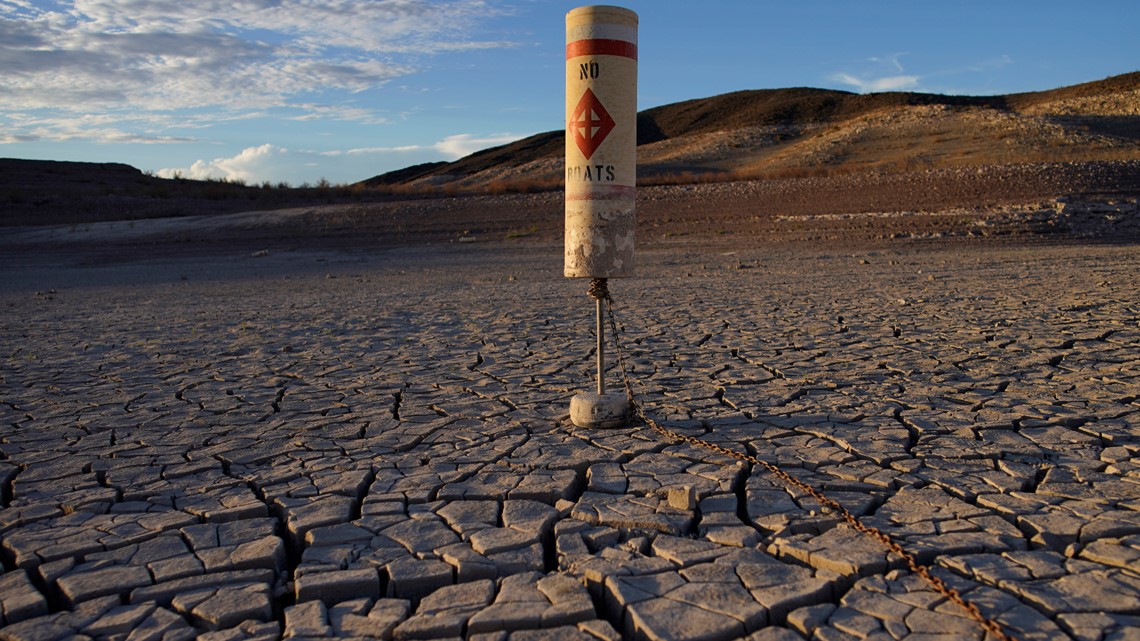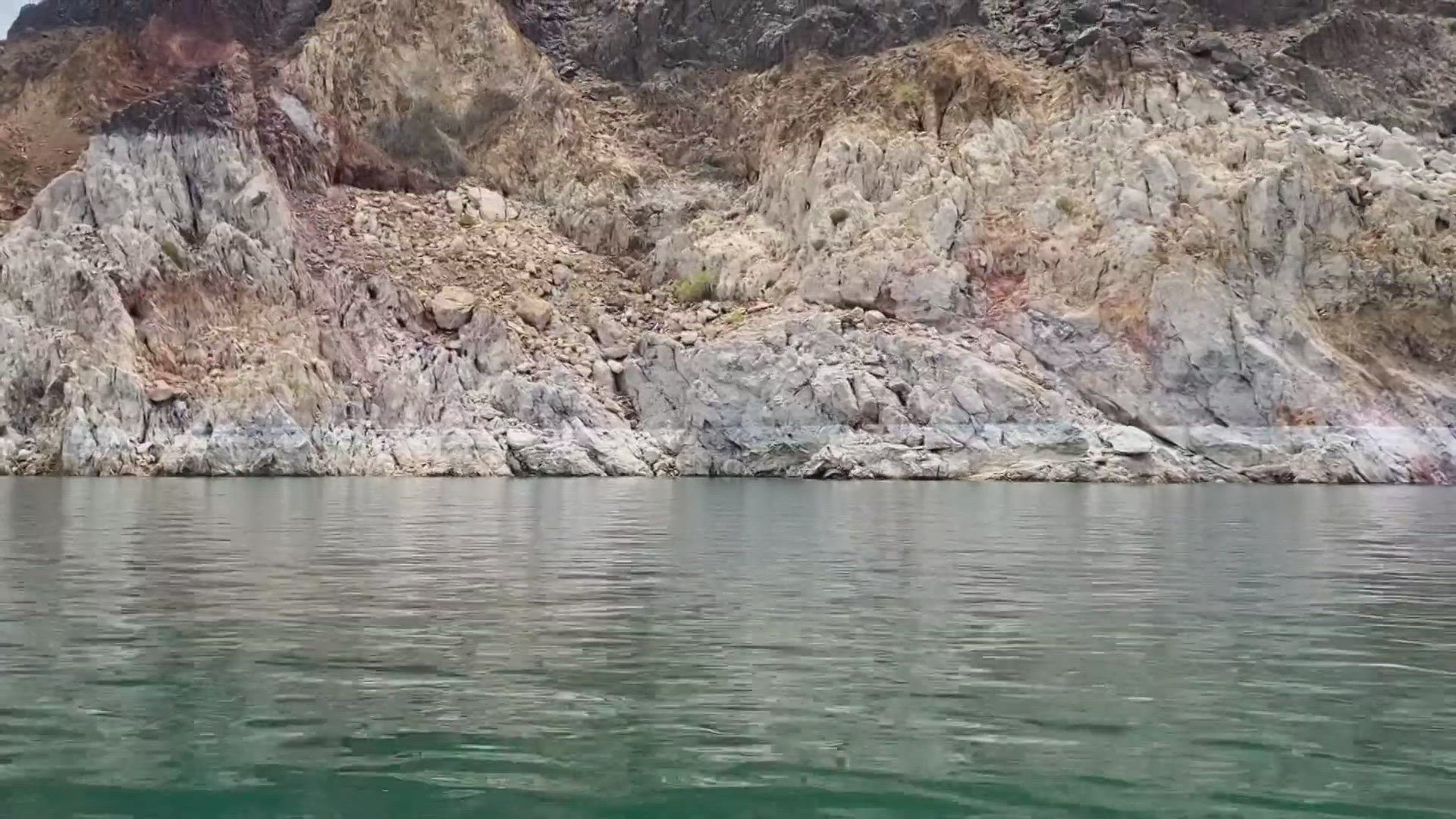PHOENIX — For over a century, the Colorado River has been a political beast. And a difficult one to understand.
Roughly 250,000 miles of land feed into a mighty flow that more than 40 million people depend upon. Cities drink from its water. Crops wither without it. Hydroelectric dams harness it to keep the lights on. With seven states and 30 Native tribes connected to its basin, nearly all of the American Southwest has a stake in the Colorado River. As such, cataloging the usage of that water was a Herculean task.
For the first time, research comprehensively accounted the ways we drain the Colorado River to little more than a trickle by the time it meets the sea. But there's a fly in the ointment — some policy experts think that this knowledge won't change a thing.
Below: A map shows the total coverage of the Colorado River basin over the American Southwest. Provided by Brian D. Richter et al.
>> Download the 12News app for the latest local breaking news straight to your phone.
The research: Where's the water going?
There's no way around it; the seven basin states — Arizona, California, Colorado, Nevada, New Mexico, Utah and Wyoming — need this water and there's barely enough to go around.
As drought and overuse of the Colorado River's water supply drains key reservoirs, states face a balancing act of cutting water use while still supporting their own interests. With so much riding on that water use, the margins are slim and compromise is tight.
RELATED: Western states reached a short-term agreement on Colorado River water. Now comes the hard part.
The paper New water accounting reveals why the Colorado River no longer reaches the sea laid out how that water was being used across the basin states and Mexico from 2000 to 2019. Previously, the usage data was scattered across dozens of federal, state and private entities. The big challenge was bringing it all together.
"What you've had over the last 20 to 30 years is a changing demand on the river," said Richard Rushforth, a data scientist and contributing researcher at Northern Arizona University.
Rushford laid out that, despite millions of people relying on the river, only about 18% of total water consumption goes to cities, towns and commercial industry. The second largest consumer of Colorado River water at 19% is evapotranspiration — the process by which plants and soil release water vapor into the atmosphere.
Below: Chart summarizes source and eventual use of water in the Colorado River. All estimates based on 2000–2019 averages. Provided by Brian D. Richter et al.
>> Live, local, breaking. Download the 12News app
When you include non-human water loss like reservoir evaporation and evapotranspiration, irrigated agriculture still takes up just over half of the Colorado River water's total use: 52%. Steep though it is, that number is lower than it used to be.
Roughly 74% of the water that humans use goes to irrigated agriculture. When differentiated by crop type, cattle feed crops like alfalfa and hay still account for just under half of human water use at 46%.
Keep in mind that not all water used for agriculture is taken out of the Colorado River system for good. Roughly 30% of water used for flood irrigation goes into recharging aquifers, experts say. Sustainability efforts focus on the threshold of use where the water being used is renewable.
"Historically, the Colorado River basin has been a lot more agriculturally based," Rushforth explained. "So as the urbanization of Arizona, southern Nevada, southern California and other basin states has occurred, you see water use shift away from predominantly agriculture."
He noted that one aspect of the data caught him off guard.
"What really popped out at me is the amount of evaporation. It's significant," Rushforth said. "About 11% of total water used in the basin is lost due to evaporation. If we look going forward and we're potentially in a hotter and drier climate, that number, that evaporation, there's going to be a greater demand on reservoirs and canals."
Laying out the uses of the Colorado River provides researchers and interested parties with helpful insight to be sure. But in the desert, it's not a game of how the water is being used. It's a game of how much is used.


The response: Who cares?
Sarah Porter does. She's an expert on natural resources and the inaugural director of Arizona State University's Kyl Center for Water Policy — a think tank dedicated to raising the "water IQ" of Arizona and the West.
But, even as a self-proclaimed water nerd, she doesn't see this research making a splash in the short term.
"I think it's a really geeky paper that is of great interest to water nerds like me. I don't think that it's enlightening for people in their general understanding of what's going on with the Colorado River," Porter said.
In total, the federal government, Mexico, seven states and 29 sovereign tribes are involved in negotiating how to operate the Colorado River system, Porter explained. From 2000 to 2019, the river system suffered an average annual overdraft of 10%, leading to massive water level drops in Lake Mead and Lake Powell, plunging us into a "zone of risk." Fortunately, two years of excellent snowpack put the Southwest in a good place.
Below: Water consumed by each sector in the Colorado River Basin and sub-basins (including exports), based on 2000–2019 averages. Provided by Brian D. Richter et al.
Recent negotiations culminated in a Bureau of Reclamation management plan lasting through 2026. Already, the basin states have submitted competing proposals for who should shoulder the burden of cutting water use and agriculture has a lot of sway in that. Southwestern farmers have powerful seniority water rights. Their choice of crop isn't going to change that, Porter explained.
For now, the specific use cases don't look like they'll have an impact on those discussions. It's just a means to better understand a big picture that the Southwest already had. As Porter put it, "most of the water was going to agriculture. We already knew that. We've known that forever."
"The water for the Colorado River was really allocated a long time ago, especially the water that farmers rely on," she said. "We probably should be having a conversation in this country about these 'forever allocations.' Did we really mean forever? Or is there some kind of way to reconsider?"
Amidst the tepid response, Porter praised the long-term planning potential inherent in this research.
"I see it as helping people have a better understanding of what the opportunities are. Cities don't need very much water, and cities have demonstrated they can grow on the water supplies they have," Porter said. With a clearer picture of the situation, stakeholders are better poised to negotiate potential future reallocation of water or find the areas where conservation efforts can be improved.


Rushforth already sees some of those opportunities as the Southwest grapples with dwindling water supples.
"There's potential for innovation to understand how we can reduce the very significant amount of evaporation across the basin in man-made structures," he said. "This is, I think, the best collection of all this information about the Colorado River. But it's certainly not done."
For now, the Southwest is keeping its head above the water, as it were. Even with more cuts on the horizon, successful negotiations and new knowledge have Porter optimistic about the Colorado River's future.
"There are mechanisms available," she concluded. "They're not easy, but there are mechanisms for different types of reallocation. As the need arises, I think they'll occur."
WATER WARS
Water levels are dwindling across the Southwest as the megadrought continues. Here's how Arizona and local communities are being affected.

